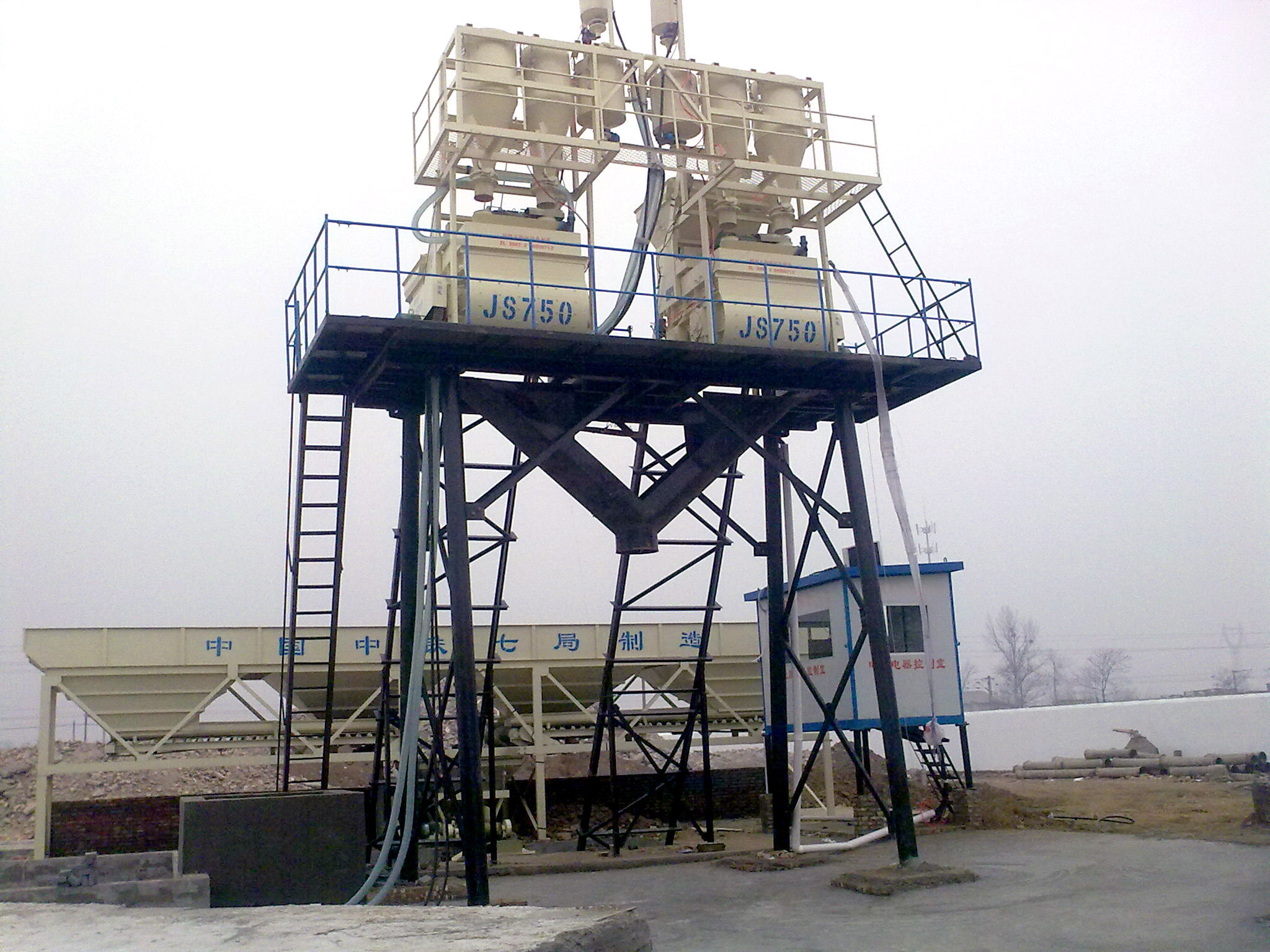What to Look for in a Concrete Batching Plant
When choosing a concrete batching plant, selecting the right model for your needs can make a significant difference in efficiency, cost-effectiveness, and project outcomes. A high-quality batching plant will allow you to produce large volumes of concrete quickly, supporting various construction settings from roadworks to large building sites. Here’s a guide on the key factors to consider and how to maximise the benefits of your investment.
[edit] 1. Types of Concrete Batching Plants: Stationary vs. Mobile
Concrete batching plants come in two main types—stationary and mobile—and each serves different needs:
[edit] Stationary Batching Plants
Stationary plants are designed for prolonged use in one location. They are ideal for projects requiring a continuous supply of concrete over an extended period, like large building or infrastructure projects. With a stationary plant you can maintain high productivity without the need for frequent relocations.
[edit] Mobile Batching Plants
Mobile batching plants, on the other hand, are built to be transported easily to different sites. These are well-suited for shorter-term projects or locations where you may need to relocate the equipment regularly. This flexibility is advantageous for construction teams that work on multiple projects in different areas.
[edit] 2. Efficiency and Quality in Concrete Production
One of the primary benefits of a concrete batching plant is the efficiency it brings to construction operations. Key features to look for include:
- Consistent Mixing Quality: High-quality batching plants ensure uniform concrete production, which is critical for construction stability and quality.
- Quick Production Cycles: Efficient machines can produce large quantities of concrete in a short time, enabling teams to keep pace with demanding project schedules.
[edit] 3. Labour and Cost Efficiency
Concrete batching plants offer labour and cost-saving benefits that make them an appealing choice for construction companies:
- Reduced Labour Needs: These plants require minimal manpower for operation, which translates into lower labour costs.
- In-House Production: By producing concrete on-site, you can avoid the costs and logistical challenges of sourcing concrete from external suppliers. This leads to faster project completion times and cost savings in the long run.
[edit] 4. Environmentally Friendly Design
Modern batching plants are designed with eco-friendliness in mind. Many plants feature advanced dust and pollutant filters, keeping emissions low and maintaining compliance with environmental regulations. This is especially important on construction sites where minimising environmental impact is a priority.
[edit] 5. High Reliability and Precision Controls
Look for batching plants that are reliable and equipped with accurate weighing sensors. Precision control systems ensure that all components are consistently mixed in the correct proportions, resulting in high-quality concrete every time. Some of the key control features include:
- Automatic and Semi-Automatic Controls: These make it easy to adjust and monitor the batching process, ensuring a consistent output.
- Accurate Weighing Sensors: Precision in ingredient measurement results in consistent concrete quality, which is essential for meeting project specifications.
[edit] 6. Maintenance and Durability
A concrete batching plant is a significant investment, so it’s essential to select a model that is built to last. Durable plants can handle large workloads without frequent repairs or replacements, reducing downtime and maintenance costs.
[edit] 7. Support for Diverse Project Needs
Whether for residential construction, roadwork, or large-scale infrastructure, a concrete batching plant should be versatile enough to adapt to different project requirements. Look for plants that can handle various types of concrete mixes, ensuring your machine can meet the demands of any job.
[edit] Conclusion: Maximising Your Investment in a Concrete Batching Plant
Investing in the right concrete batching plant can have a positive impact on your project’s productivity, costs, and environmental footprint. By choosing a model that suits your specific project needs, you can ensure steady concrete production, maintain high quality, and achieve better overall project outcomes. Whether opting for a stationary or mobile model, make sure your plant offers efficiency, reliability, and scalability to maximise your return on investment.
A concrete batching plant is a smart choice for any construction business aiming to improve operations and profitability.
[edit] Related articles on Designing Buildings
- Bituminous mixing and laying plant.
- Cast-in-place concrete.
- Cement.
- Cherry pickers.
- Compressed air plant.
- Concrete.
- Concrete batching plants.
- Concrete boom pumps.
- Concrete plant.
- Construction plant.
- Construction tools.
- Crane supports.
- Earth-moving plant.
- Equipment in buildings.
- Excavating plant.
- Forklift truck.
- Hoist.
- How to clean concrete.
- Mini concrete pumps.
- Power float.
- Precast concrete.
- Prestressed concrete.
- Reinforced concrete.
- Scabbler.
- Scaffolding.
- Six remarkable benefits of high pressure water jetting.
- Tool theft.
- Tremie.
- Types of crane.
- Types of roller.
Featured articles and news
A change to adoptive architecture
Effects of global weather warming on architectural detailing, material choice and human interaction.
How big is the problem and what can we do to mitigate the effects?
Overheating guidance and tools for building designers
A number of cool guides to help with the heat.
The UK's Modern Industrial Strategy: A 10 year plan
Previous consultation criticism, current key elements and general support with some persisting reservations.
Building Safety Regulator reforms
New roles, new staff and a new fast track service pave the way for a single construction regulator.
Architectural Technologist CPDs and Communications
CIAT CPD… and how you can do it!
Cooling centres and cool spaces
Managing extreme heat in cities by directing the public to places for heat stress relief and water sources.
Winter gardens: A brief history and warm variations
Extending the season with glass in different forms and terms.
Restoring Great Yarmouth's Winter Gardens
Transforming one of the least sustainable constructions imaginable.
Construction Skills Mission Board launch sector drive
Newly formed government and industry collaboration set strategy for recruiting an additional 100,000 construction workers a year.
New Architects Code comes into effect in September 2025
ARB Architects Code of Conduct and Practice available with ongoing consultation regarding guidance.
Welsh Skills Body (Medr) launches ambitious plan
The new skills body brings together funding and regulation of tertiary education and research for the devolved nation.
Paul Gandy FCIOB announced as next CIOB President
Former Tilbury Douglas CEO takes helm.
UK Infrastructure: A 10 Year Strategy. In brief with reactions
With the National Infrastructure and Service Transformation Authority (NISTA).
Ebenezer Howard: inventor of the garden city. Book review.
Airtightness Topic Guide BSRIA TG 27/2025
Explaining the basics of airtightness, what it is, why it's important, when it's required and how it's carried out.























